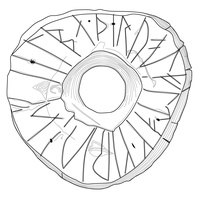
Viking Designs
Drawing of the Saltfleetby Spindle Whorl
Drawing of a lead alloy spindle whorl from Saltfleetby, Lincolnshire showing part of the runic inscription. For further information, see the entry for the original item.
Read More
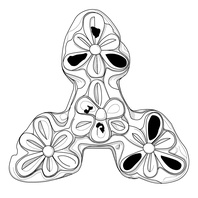
Viking Designs
Drawing of a Carolingian Trefoil Mount
Drawing of a copper alloy and gilded Carolingian mount with niello inlay found in Leicestershire. The mount has holes drilled through it for affixing to a surface, possibly a book, or perhaps to repurpose it as a pendant.
Read More
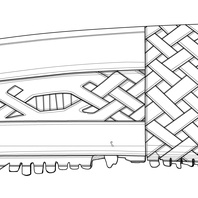
Viking Designs
Drawing of Bone Comb
A drawing of an intricately decorated bone comb found in Lincoln.
Read More
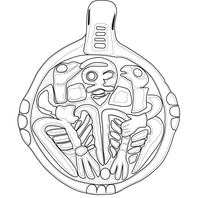
Viking Designs
Drawing of the Winteringham Pendant
A drawing of a cast silver, gilded pendant which has been interpreted as representing an image of Odin and his two ravens Huginn and Muninn. There are a number of close parallels which establish the wide currency of this subject group. These include numerous examples from Russia and two from Sweden, including some with silver gilding. A silver pendant with a related, but distinct design is known from Sjælland, Denmark. With some exceptions, pendants were generally worn by women as part of their Scandinavian dress.
Read More
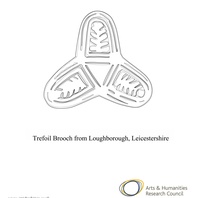
Viking Designs
Drawing of a Trefoil Brooch
A drwaing of a copper alloy trefoil brooch of a type that would have been common in the Danelaw. Trefoil brooches were characteristically Scandinavian women’s wear. However, many examples found in the East Midlands were probably made in the Danelaw, and may have been copies of Scandinavian styles, instead of being imported from Scandinavia. Scandinavian brooches came in a variety of sizes and shapes which included disc, trefoil, lozenge, equal-armed, and oval shapes. The different brooch types served a variety of functions in Scandinavian female dress with oval brooches typically being used as shoulder clasps for apron-type dresses and the rest being used to secure an outer garment to an inner shift. Anglo-Saxon brooches do not match this diversity of form with large disc brooches being typical of ninth century dress styles with smaller ones becoming more popular in the later ninth and tenth centuries. However, since disc brooches were used by both Anglo-Saxon and Scandinavian women they are distinguished by their morphology. Scandinavian brooches were typically domed with a hollow back while Anglo-Saxon brooches were usually flat. Moreover, Anglo-Saxon brooches were worn singly without accompanying accessories.
Read More
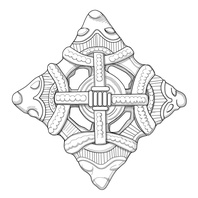
Viking Designs
Drawing of a Lozenge Brooch
Drawing of a copper alloy lozenge brooch in the Borre style. This type of brooch was common throughout the Danelaw in the Viking Age and was used as an accessory by women who wore Scandinavian dress. Scandinavian brooches came in a variety of sizes and shapes which included disc, trefoil, lozenge, equal-armed, and oval shapes. The different brooch types served a variety of functions in Scandinavian female dress with oval brooches typically being used as shoulder clasps for apron-type dresses and the rest being used to secure an outer garment to an inner shift. Anglo-Saxon brooches do not match this diversity of form with large disc brooches being typical of ninth century dress styles with smaller ones becoming more popular in the later ninth and tenth centuries. However, since disc brooches were used by both Anglo-Saxon and Scandinavian women they are distinguished by their morphology. Scandinavian brooches were typically domed with a hollow back while Anglo-Saxon brooches were usually flat. Moreover, Anglo-Saxon brooches were worn singly without accompanying accessories.
Read More
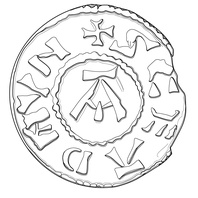
Viking Designs
Drawing of a St Edmund Penny
Between 895 and 915, Scandinavian settlers in East Anglia minted a series of pennies and half pennies with the inscription SCE EADMVND REX (St Edmund the king). These coins appear to have been used widely throughout the Danelaw, and a large number of them were discovered in the Cuerdale Hoard from Lancashire.
Read More
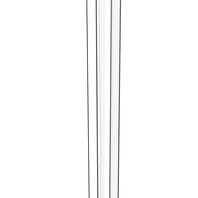
Viking Designs
Drawing of a Viking Sword
This is a drawing of a Viking Age sword which was found in Grave 511 at Repton where the invading Viking Great Army had their winter camp in 873/4. When it was found, the sword had traces of a wooden scabbard attached to the rusted blade. Analysis showed that the scabbard was lined with fleece and covered in leather. The grip was wooden and covered in a woollen textile.
Read More
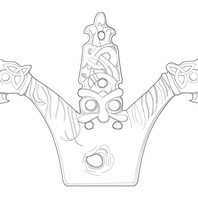
Viking Designs
Drawing of a Mystery Item
This is a drawing of a gilded, copper alloy object that was clearly affixed to something else. The gilding shows that it was high status but its function remains a mystery.
